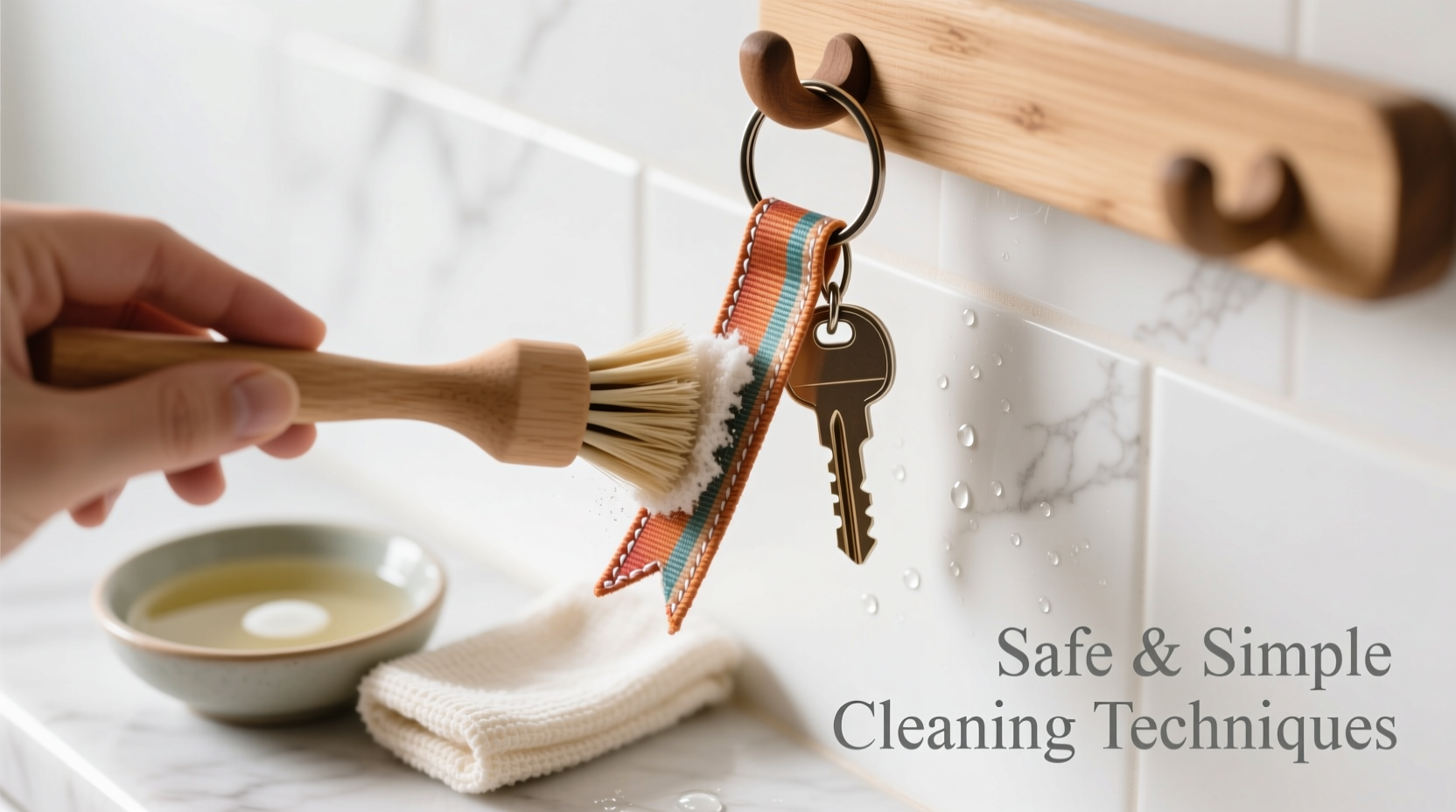Fabric ribbon keychains are charming, personalized accessories that add flair to keys, bags, or gifts. Often made from delicate satin, cotton, or polyester ribbons, they can easily accumulate dirt, oils, and stains from daily handling. While cleaning them might seem straightforward, improper methods can lead to fraying, fading, or warping of the material. The goal is not just cleanliness but preservation—maintaining both appearance and structural integrity. This guide delivers practical, tested techniques to safely clean fabric ribbon keychains using household items and mindful practices.
Understanding Fabric Ribbon Materials

Before any cleaning begins, identifying the ribbon’s composition is essential. Different fabrics react differently to water, detergents, and agitation. Common types include:
- Satin ribbon: Smooth and glossy, usually made from polyester or nylon. Prone to water spots and heat damage.
- Cotton ribbon: Natural fiber, breathable and absorbent. More durable when wet but may shrink if exposed to hot water.
- Polyester blend: Resistant to shrinking and fading, but sensitive to high heat and harsh chemicals.
- Organza or tulle: Sheer and lightweight, often used in decorative layers. Extremely fragile when wet.
Mixed-material keychains—those with metal charms, beads, or glued embellishments—require even more caution. Water exposure can corrode metal parts, loosen adhesives, or cause discoloration.
“Delicate trims and layered ribbons need spot treatment rather than full immersion. The structure of a keychain means localized soiling is common, making targeted cleaning smarter and safer.” — Lena Patel, Textile Preservation Specialist
Step-by-Step Guide: Safe Cleaning Process
Cleaning a fabric ribbon keychain doesn’t require complex tools or specialty products. With patience and attention to detail, you can restore its freshness at home. Follow this timeline-based method for optimal results:
- Inspect the keychain (2 minutes): Check for loose threads, weak glue joints, or tarnished hardware. If decorations are unstable, avoid submersion entirely.
- Spot test (5 minutes): Dampen a cotton swab with your chosen cleaning solution and apply it to an inconspicuous area. Wait 10 minutes. Look for color bleeding, texture changes, or stiffness.
- Dry brushing (3–5 minutes): Use a soft-bristled toothbrush or makeup brush to gently dislodge surface dust and debris. Brush in the direction of the weave to prevent fraying.
- Spot clean stains (8–10 minutes): Dip a corner of a microfiber cloth in a mixture of one part mild dish soap and three parts cool water. Gently dab stained areas. Do not rub.
- Rinse residue (optional, 2 minutes): Wipe the cleaned area with a separate cloth dampened only with cool water to remove soap traces.
- Air dry flat (4–6 hours): Lay the keychain on a clean towel away from direct sunlight or heat sources. Reshape the ribbon gently as needed.
Do’s and Don’ts: Best Practices Table
| Action | Do | Don't |
|---|---|---|
| Water temperature | Use cool or lukewarm water | Never use hot water |
| Cleaning agents | Mild liquid soap or baby shampoo | Bleach, alcohol, or abrasive cleaners |
| Drying method | Air dry flat in shaded area | Use a hairdryer or radiator |
| Handling embellishments | Clean around them carefully | Soak charms or glued elements |
| Storage post-cleaning | Keep in breathable fabric pouch | Store in sealed plastic bag (traps moisture) |
Real Example: Reviving a Gifted Keychain
Sophie received a handmade silk-look ribbon keychain from her sister two years ago. Over time, the central bow darkened near the folds where her fingers frequently touched it. Initially hesitant to wash it, she followed the spot-cleaning method using diluted baby shampoo. After testing on the tail end of the ribbon, she gently blotted the soiled area with a lint-free cloth. Within 15 minutes, the grime lifted without affecting the dye. She let it dry overnight on a windowsill (out of direct sun), and the keychain regained nearly its original luster. “I was amazed,” she said later. “It felt like getting the gift all over again.”
This case illustrates how minimal intervention, guided by caution and proper technique, can yield excellent results—even on sentimental items.
Checklist: Pre-Cleaning Safety Steps
Before applying any moisture or cleaner, run through this quick checklist to avoid irreversible damage:
- ✅ Identify the ribbon material (check packaging or ask giver if handmade)
- ✅ Examine for glued-on elements, embroidery, or metallic threads
- ✅ Perform a spot test in an inconspicuous area
- ✅ Gather supplies: soft brush, microfiber cloths, mild soap, bowl of cool water
- ✅ Remove the keychain from keys or clips if possible
- ✅ Choose a clean, dry workspace with good lighting
Frequently Asked Questions
Can I put a fabric ribbon keychain in the washing machine?
No. The agitation and spin cycle can crush, tangle, or tear delicate ribbons. Metal components may also become loose or rust. Hand cleaning is the only safe method.
What should I do if the ribbon gets wrinkled after drying?
Light wrinkles can often be smoothed by gently stretching the ribbon while slightly damp. For stubborn creases, place the ribbon between two clean cloths and press with a cool iron (no steam). Avoid direct contact with the iron.
How often should I clean my ribbon keychain?
Clean only when visibly soiled or after prolonged use. Most benefit from light dusting every few weeks and spot cleaning every 3–6 months. Over-cleaning accelerates wear.
Conclusion: Care That Honors the Detail
Fabric ribbon keychains, though small, carry meaning—whether as souvenirs, handmade gifts, or personal style statements. Their longevity depends not on how often they’re cleaned, but on how thoughtfully. By choosing gentle methods, respecting material limits, and acting before stains set in, you preserve both beauty and sentiment. These accessories thrive on consistent, low-impact care. A few minutes of mindful attention can extend their life for years.









 浙公网安备
33010002000092号
浙公网安备
33010002000092号 浙B2-20120091-4
浙B2-20120091-4
Comments
No comments yet. Why don't you start the discussion?